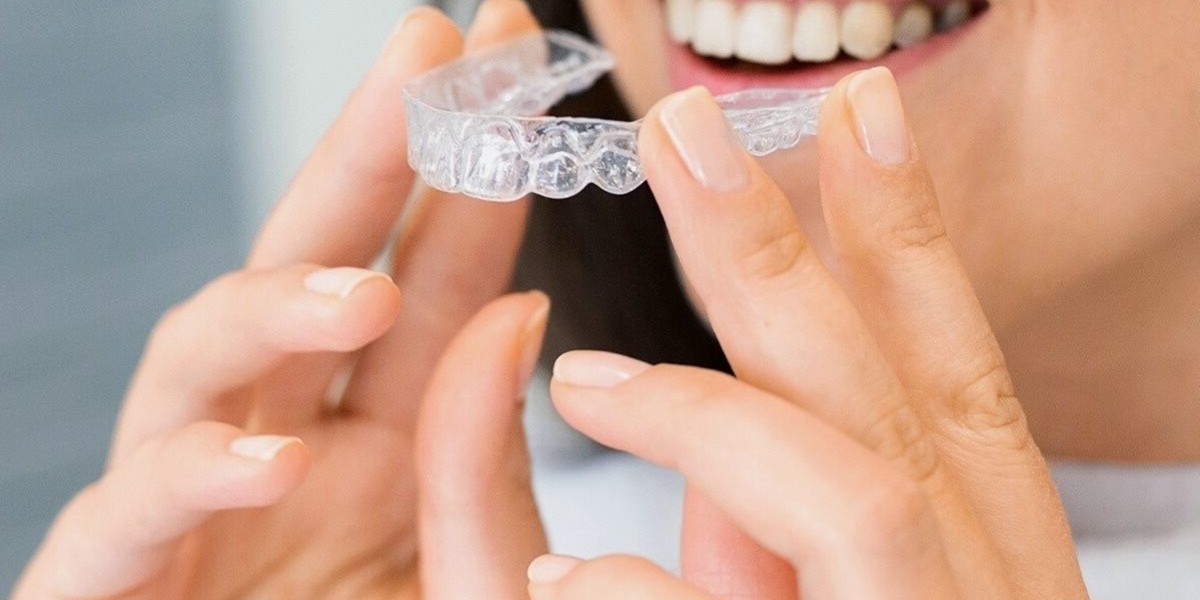One of the most significant advancements in recent years is the development of Invisalign, a modern and discreet method for straightening teeth. This comprehensive article delves into the world of Invisalign, exploring its history, benefits, treatment process, suitability, and future trends. Understanding these aspects can help individuals make informed decisions about this innovative orthodontic solution.
Introduction to Invisalign
Overview and Importance
Invisalign is a revolutionary orthodontic treatment that uses a series of custom-made, clear plastic aligners to gradually straighten teeth. Unlike traditional braces, Invisalign aligners are virtually invisible, removable, and comfortable, making them an appealing option for many patients. The importance of Invisalign lies in its ability to provide effective orthodontic treatment while allowing patients to maintain their appearance and lifestyle.
History of Invisalign
Invisalign was introduced in 1997 by Zia Chishti and Kelsey Wirth, co-founders of Align Technology. The concept of using clear aligners was a groundbreaking departure from traditional braces, and it quickly gained popularity. Since its inception, Invisalign has undergone continuous improvements, incorporating advanced technology and materials to enhance its effectiveness and comfort.
How Invisalign Works
Customised Treatment Plan
The Invisalign treatment begins with a comprehensive consultation and examination by a certified Invisalign provider. This includes taking digital scans or impressions of the patient’s teeth, which are used to create a customised treatment plan. The plan outlines the step-by-step movements of the teeth and provides a visual representation of the expected results.
Creation of Aligners
Using advanced 3D computer imaging technology, a series of aligners is custom-made for the patient. Each aligner is designed to fit snugly over the teeth and apply gentle, controlled pressure to guide them into the desired position. Typically, a new set of aligners is provided every one to two weeks, each slightly different to continue the progression.
Wearing and Changing Aligners
Patients are instructed to wear their aligners for 20 to 22 hours per day, removing them only for eating, drinking (except water), brushing, and flossing. The aligners are changed approximately every one to two weeks, following the sequence prescribed in the treatment plan. Regular check-ups with the Invisalign provider are necessary to monitor progress and make any necessary adjustments.
Benefits of Invisalign
Aesthetic Appeal
One of the most significant advantages of Invisalign is its aesthetic appeal. The clear aligners are virtually invisible, making them an excellent choice for individuals who are conscious about their appearance during orthodontic treatment. This is particularly important for adults and teenagers who may feel self-conscious about wearing traditional metal braces.
Comfort and Convenience
Invisalign aligners are made from smooth, medical-grade plastic, which reduces the risk of irritation to the cheeks and gums, a common issue with metal braces. The ability to remove the aligners for eating and oral hygiene also adds to the convenience, allowing patients to maintain their regular diet and brushing routines without any restrictions.
Improved Oral Hygiene
Traditional braces can make brushing and flossing challenging, leading to an increased risk of plaque buildup, cavities, and gum disease. With Invisalign, patients can remove the aligners to clean their teeth thoroughly, promoting better oral hygiene and reducing the likelihood of dental problems during treatment.
Predictable and Effective Results
The Invisalign treatment plan is carefully designed using advanced computer technology, providing a predictable and detailed roadmap of the expected tooth movements. This precision helps ensure effective and efficient results, often with shorter treatment times compared to traditional braces.
The Invisalign Treatment Process
Initial Consultation
The journey with Invisalign begins with an initial consultation with a certified provider. During this visit, the dentist or orthodontist will assess the patient’s dental condition, discuss their goals and expectations, and determine if Invisalign is a suitable treatment option. Digital scans or impressions are taken to create a customised treatment plan.
Customised Treatment Plan
Using the digital scans or impressions, a 3D model of the patient’s teeth is created. The Invisalign provider uses this model to plan the precise movements of the teeth throughout the treatment. The patient can see a digital representation of the final results, helping them understand the expected outcome.
Aligners and Treatment Progression
Once the treatment plan is finalised, a series of custom aligners is manufactured. The patient receives several sets of aligners, which they need to change approximately every one to two weeks. Each aligner applies targeted pressure to specific teeth, gradually moving them into the desired position.
Regular Check-Ups
Throughout the treatment, regular check-ups with the Invisalign provider are essential. These appointments allow the provider to monitor progress, ensure the treatment is proceeding as planned, and address any issues. The frequency of check-ups varies but typically occurs every six to eight weeks.
Retention Phase
Upon completing the active treatment phase, the patient enters the retention phase to maintain the newly aligned teeth. This usually involves wearing a retainer, which can be removable or fixed, to prevent the teeth from shifting back to their original positions. The Invisalign provider will give specific instructions on how long and when to wear the retainer.
Suitability of Invisalign
Ideal Candidates
Invisalign is suitable for a wide range of orthodontic issues, including crowding, spacing, overbites, underbites, crossbites, and open bites. It is particularly ideal for patients who prioritise aesthetics and convenience. Both teenagers and adults can benefit from Invisalign, and it can be a suitable option for those with mild to moderate orthodontic problems.
Limitations and Considerations
While Invisalign is effective for many cases, it may not be suitable for severe orthodontic issues that require more complex movements or adjustments. In such cases, traditional braces or other orthodontic treatments may be recommended. A thorough evaluation by an Invisalign provider is necessary to determine the best course of action.
Case Studies and Success Stories
Teen Treatment Success
Teenagers often benefit significantly from Invisalign due to its discreet nature and minimal impact on their lifestyle. Case studies show teenagers achieving excellent results with Invisalign, enjoying the freedom to participate in sports, play musical instruments, and eat their favourite foods without restrictions.
Adult Treatment Success
Many adults who did not have the opportunity to receive orthodontic treatment in their youth are now turning to Invisalign. Success stories highlight the positive impact on their professional and personal lives, with improved self-confidence and oral health.
Complex Cases
Invisalign has successfully treated complex cases that involve significant tooth movement and bite correction. Advances in technology and techniques have expanded the range of cases that can be effectively managed with Invisalign, showcasing its versatility and effectiveness.
Cost Considerations
Factors Influencing Cost
The cost of Invisalign treatment varies based on several factors, including the complexity of the case, the length of treatment, and the geographic location of the practice. The number of aligners required and any additional procedures, such as tooth extractions or the use of attachments, can also impact the overall cost.
Insurance and Financing Options
Many dental insurance plans now offer partial coverage for Invisalign treatment, similar to traditional braces. Additionally, most Invisalign providers offer financing options to make the treatment more affordable. Flexible payment plans and financing through healthcare credit companies are commonly available.
Cost-Benefit Analysis
While Invisalign may be more expensive than traditional braces, the benefits of aesthetics, comfort, and convenience often justify the investment. Patients need to weigh the cost against the long-term advantages of improved oral health and a confident smile.
Future Trends and Innovations in Invisalign
Technological Advancements
Invisalign continues to evolve with advancements in technology. Innovations such as SmartTrack material, which enhances aligner fit and comfort, and SmartForce features, which improve the precision of tooth movements, are continually being developed to improve treatment outcomes.
Enhanced Customisation
Future trends in Invisalign focus on further enhancing customisation. Advanced software and 3D printing technologies allow for even more precise aligner fabrication, ensuring a better fit and more effective treatment.
Broader Accessibility
As technology improves and costs decrease, Invisalign is becoming more accessible to a wider range of patients. Efforts are being made to make Invisalign treatment available in more dental practices and to offer flexible pricing options to accommodate various budgets.
Conclusion
Summary of Key Points
Invisalign has revolutionised orthodontic treatment with its clear, removable aligners that provide effective results while maintaining aesthetics and comfort. The treatment process involves a customised plan, regular check-ups, and a retention phase to ensure long-term success.
The Impact of Invisalign on Orthodontics
The impact of Invisalign on orthodontics is profound, offering patients a discreet and convenient alternative to traditional braces. Its popularity continues to grow, driven by advancements in technology and increasing awareness of its benefits.
Final Thoughts and Recommendations
For individuals considering orthodontic treatment, consulting with a certified Invisalign provider is the first step. A thorough evaluation will determine if Invisalign is the right option and help develop a personalised treatment plan. With its numerous advantages and ongoing innovations, Invisalign remains a leading choice for achieving a healthy, beautiful smile.



